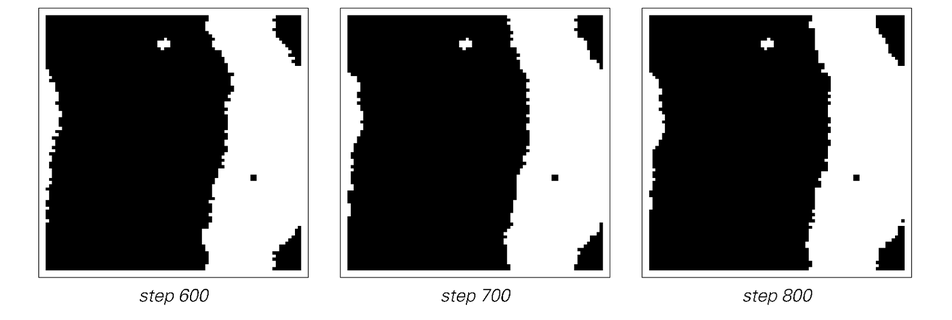

Behavior of a two-dimensional cellular automaton starting from a random initial condition. At each step, each cell looks at the total number of black cells in the 9-cell neighborhood consisting of the cell itself and the 8 cells adjacent to it (including diagonals). If this total is less than 4, then the cell becomes white on the next step, while if the total is greater than 6, it becomes black. If the total is exactly 5, then the cell becomes white, and if the total is exactly 4, then it becomes black. (The rule has totalistic code 976.) The pictures show that on a large scale, the rule leads to regions of black and white whose boundaries behave in a seemingly smooth and continuous way. Note that each picture is 80 cells across, and is effectively wrapped around so that the left neighbor of the leftmost cell is the rightmost cell, and so on.



